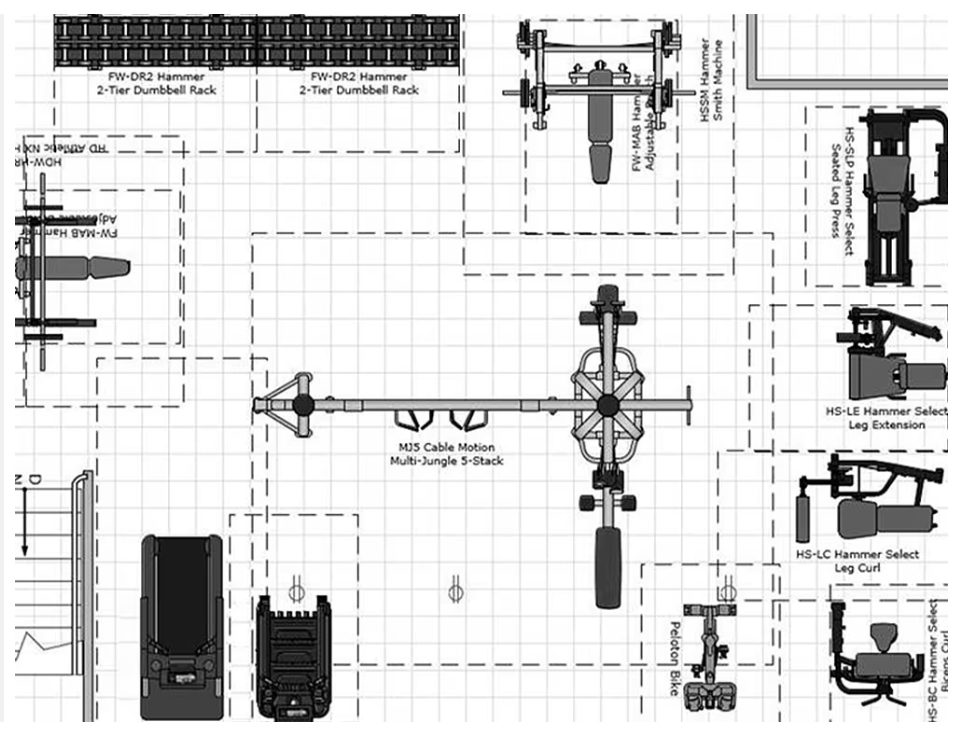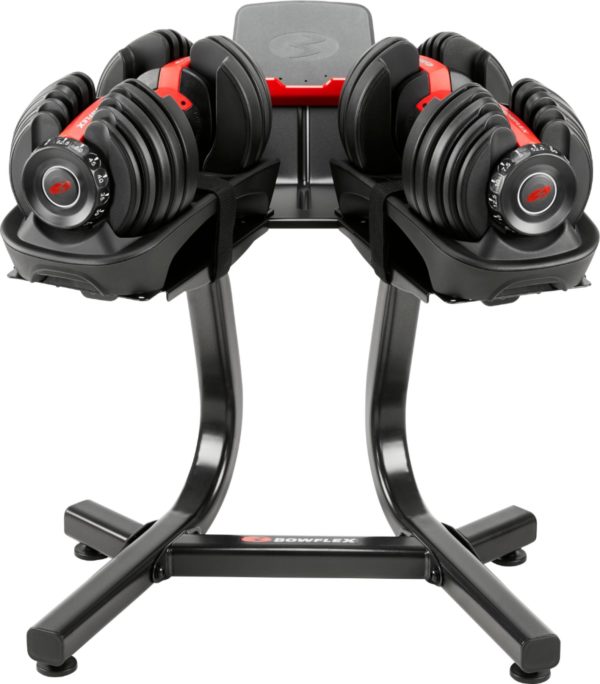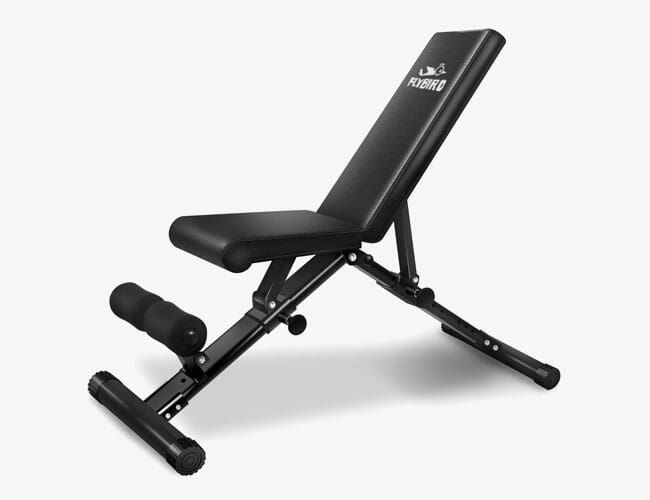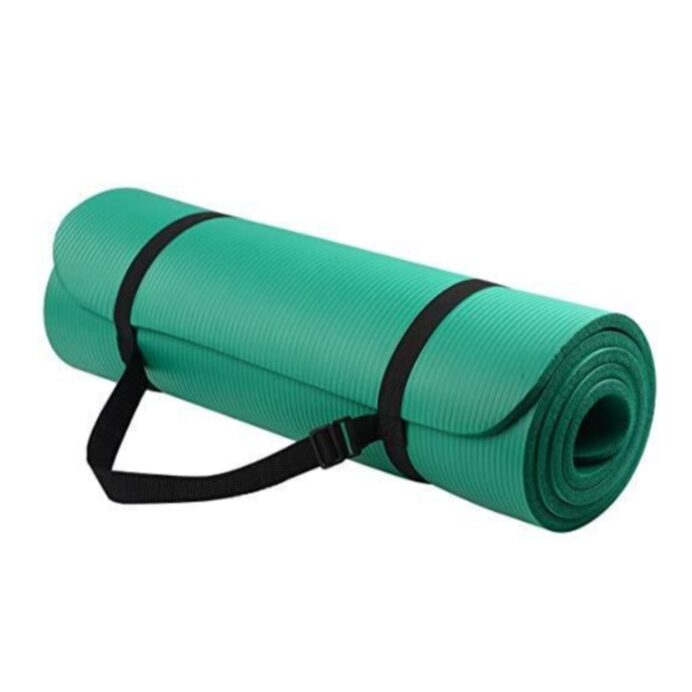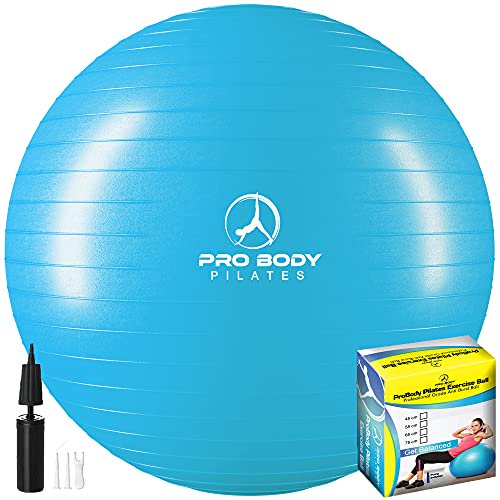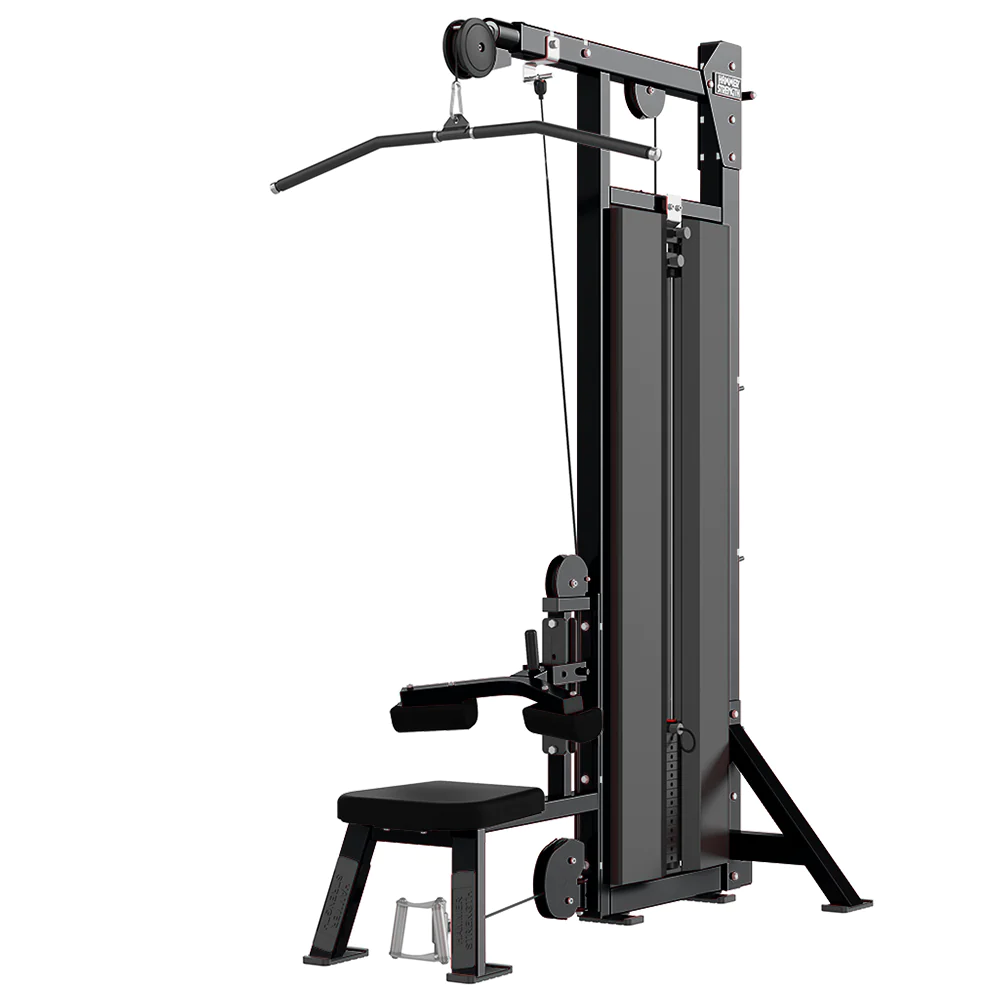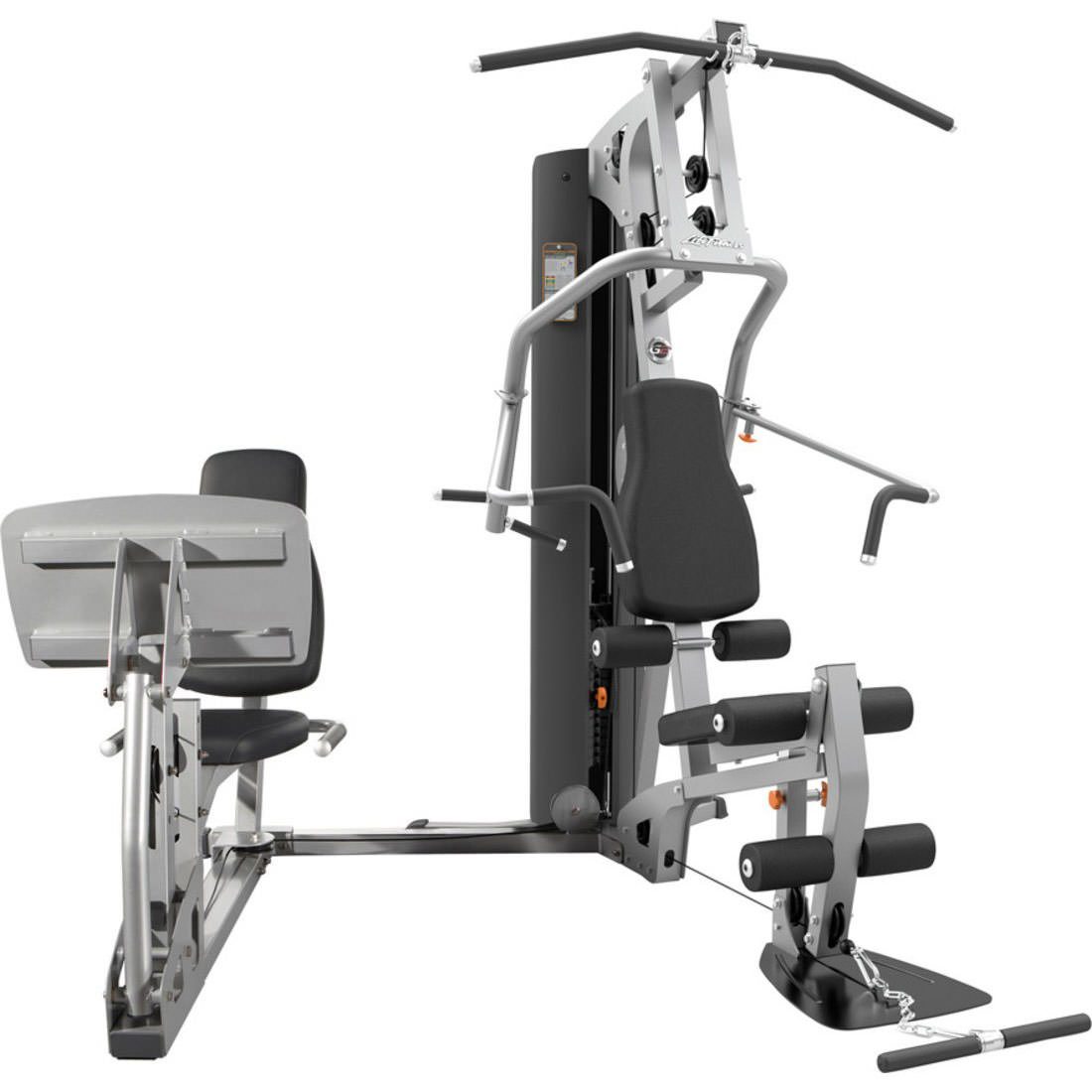Creating the best home gym setup doesn’t have to be complicated or expensive. With a clear plan and the right equipment, you can tailor a space that suits your fitness goals and eliminates the need for a membership. The key is selecting versatile equipment that maximizes both space and efficiency.
Consider the layout and safety features as you plan your home gym. Look for equipment that can serve multiple purposes, such as adjustable dumbbells or resistance bands, which can aid in a wide variety of workouts. Prioritizing quality over quantity will ensure that your home gym setup remains effective and safe.
Maintaining your home gym is crucial for longevity and continued success in your fitness journey. Regular cleaning and equipment checks will keep everything in top condition. Investing in a few advanced training accessories can further enhance your workouts and help you track progress precisely.
In this post, we will cover all aspects of how to best setup your home gym space and workout program, including planning, goal setting, equipment options, and keeping track of progress. We’ll finish of with some FAQs and a summary of the key points.
Related content:
Let’s get started.
Planning Your Home Gym
Now that we’re over 50, there are a few realities of life we need to consider when structuring a home workout program.
Sarcopenia, or age-related muscle loss, causes a progressive decrease in strength and muscle mass, and to some extent happens to all of us. Things that used to be easy to do are getting harder.
Past injuries create chronic aches and pains. New injuries are much harder to recover from.
And these forces threaten to diminish the quality of life in our later years, right at a time when we should be enjoying life the most. This can all feel very discouraging.
But there is a way to lift ourselves out of this downward spiral.
Research has clearly established that these negative forces can be mitigated, or even reversed, through progressive resistance exercise, or strength training.
Strength training is no longer just for athletes or teenage boys looking to get bigger to impress the girls; it is a key component in everyone’s health and fitness plan – especially those of us over 50.
But the truth is, most home gym workout programs don’t provide the one essential component that gets us stronger – progressive overload. They take the easy way out and show us bodyweight exercises, or tell us that one set of light dumbbells we have is enough.
And then 6 months later, we wonder why we don’t notice any changes in how we look or how we function.
But it doesn’t have to be that way. With the right equipment and the right program, you can get and stay strong quickly and safely, working out in the privacy of your own home, and sustain those results for years to come.
Careful planning is essential for creating an effective home gym. Focus on understanding your fitness goals, identifying the right space, and managing your budget to ensure your home gym meets your expectations.
Understanding Your Fitness Goals
Begin by clearly defining your fitness goals. Are you aiming for increased strength, cardiovascular fitness, flexibility, or fat loss?
Strength training should be the foundation of an overall fitness plan.
There are 4 components of Physical Fitness: muscular strength, cardiovascular endurance, flexibility, and body composition.
Of the 4, muscular strength is the one that holds primary importance. Strength is called upon more often in life than cardiovascular endurance or flexibility, and plays a central role in body composition.
And – a properly performed strength training program will positively affect cardiovascular endurance, flexibility, and body composition, but endurance training, stretching, or dieting do not improve muscular strength.
So strength training gives you the biggest “bang for your buck”, and done properly requires very little time – under 45 minutes a couple times a week.
Now I’m not saying people should only do strength training and then be sedentary the rest of the time. I’m a big believer in the idea that we rust out faster than we wear out.
So I recommend being active, engaging in low to moderate intensity leisure activities or exercise on your non-strength training days.
Just remember you only have one gas tank, so if you’re doing higher intensity activities like entering road races you’ll need to allow some extra recovery time between those activities and your strength training.
Identify what type of workouts you enjoy or need the most. Knowing your goals helps streamline the selection of equipment and prevents unnecessary purchases.
Evaluating Space and Location
Before diving into setting up your home gym in the garage or basement, it’s important to assess the available space and determine your budget. This will help you make informed decisions about the type and quantity of equipment you can accommodate.
Select a location in your home that best fits your gym setup. Common choices include garages, basements, and spare rooms.
Measure the dimensions: Measure the available space carefully to accommodate the equipment without crowding.
Start by measuring the length, width, and height of your space. Note any architectural features, such as pillars or windows, that may affect the layout.
Small spaces can still serve as effective workout areas with careful planning. With just the bare minimum ‘essential home gym equipment’ (see below), you can get by with a space as small as 5 feet by 7 feet.
Utilize vertical storage for items like resistance bands or mats and consider foldable equipment. Ensure proper ventilation and lighting in the chosen area to create a comfortable workout environment.
Having a spacious area of your home dedicated to your workout program, such as creating a basement or garage gym, will allow you to add extra equipment, convenience, and efficiency, and create an environment that inspires you to do your best.
Consider clearance requirements: Keep in mind that certain pieces of equipment may require additional space around them for safe usage and movement.
Create a template: It’s very helpful to get some graph paper with grid lines and draw out a birds-eye view of the dimensions of your space.
Budgeting and Cost Considerations
Establishing a budget is crucial for your home gym setup. High-end equipment can be enticing but isn’t always necessary. Identify the must-have items based on your fitness goals and allocate funds accordingly. A budget home gym might include essentials like adjustable dumbbells, an adjustable bench, and an exercise mat.
Compare prices from different suppliers and look for discounts or second-hand options to maximize value at the best price. Prioritize equipment that offers versatility and multiple uses, such as a bench that can be adjusted for various exercises. Keeping cost in mind ensures financial sustainability while meeting fitness needs.
Essential Home Gym Equipment
Creating your best home gym setup requires selecting versatile and effective equipment to ensure comprehensive workouts.
You don’t need to let a lack of expensive exercise equipment in the gym stand in your way of getting started on a workout program. You can get great strength and muscle-building workouts in the privacy of your own home with just a few home gym essentials, on a budget that won’t break the bank, and without taking up a lot of room in your home.
Adjustable Dumbbells
This will be your most important, and most costly expenditure. You must have a source of progressive resistance for your exercise routine to build muscle and strength – bodyweight exercises alone won’t do it.
Adjustable dumbbells are perfect for a home gym because they only take up the space of 1 set of dumbbells, but the resistance can be progressed from the lightest weight (5-10 pounds) to the heaviest weight (50-90 pounds) in 2.5-to-5-pound increments, replacing 15 sets of conventional dumbbells. View on Amazon
Adjustable weight bench
An adjustable workout bench is a huge addition for a complete home gym setup. Having one will vastly increase the number of exercises you can perform, which will give you more complete muscular development, keep your motivation high, and help keep your workout plan sustainable.
Adjustable means you can alter the angle of the bench to enable you to lay flat, at an incline, or sit upright with full back support. View on Amazon
Floor Mat
A padded floor mat will allow you to perform the abdominal exercises, lumbar stabilization exercises, shoulder external rotation, and hip stretches comfortably. A1/2-inch-thick yoga mat should work great.
If you have a compact home gym space, these mats can be rolled up and put away in between workouts. View on Amazon
Exercise Ball
The Swiss ball will allow you to perform wall squats with the ball behind your low back as your lower body push exercise to strengthen your hips and legs safely and effectively.
You can also use it to perform low back extension. They come in different sizes; I recommend the 55 cm ball. View on Amazon
CAUTION: do not sit or lay down on the Swiss ball for upper body exercises, that’s very dangerous!
Strength Training Machines
Strength training machines offer more controlled and isolated workout options. A smith machine provides guided barbell movements, reducing the risk of injury while performing squats and presses. A cable machine, such as a functional trainer or conventional pulldown machine, offer a variety of pulldown and row exercises to target different muscle groups. View Life Fitness/Hammer Strength options
In addition, incorporating a treadmill or a jump rope can help with cardiovascular fitness.
A compact multi-gym can combine various strength training exercises into one machine, making it an efficient choice for small spaces. Prioritize machines with adjustable weights to accommodate a range of fitness levels and exercise needs. View Life Fitness G2 (pictured)
For most multi-station compact home gyms, you will need at least a 10 foot by 10 foot space.
If you decide to purchase a new, out-of-the-box compact multi-gym, it’s a good idea to go with professional assembly. As you can imagine, this home gym comes with a lot of pieces, a lot of hardware, and the assembly process is quite involved.
You’d be responsible for putting the whole frame together, adding the plates, and routing the cables (something most people aren’t interested in messing with). The seller should offer professional installation, either from them or through a 3rd party installation company they recommend.
For heavier lifting, many people advocate investing in an Olympic barbell and a set of weights. A power rack or squat rack is typically recommended to enhance safety for exercises like squats and deadlifts. Bumper plates are used for Olympic weightlifting-type movements.
This is a matter of philosophy. If you are going to do that type of training, you must be willing to accept a higher risk of injury.
Personally, I don’t recommend over-50 trainees use barbells or power racks, which are cage-like racks that you stand or use a bench within which has supports to hold the barbell.
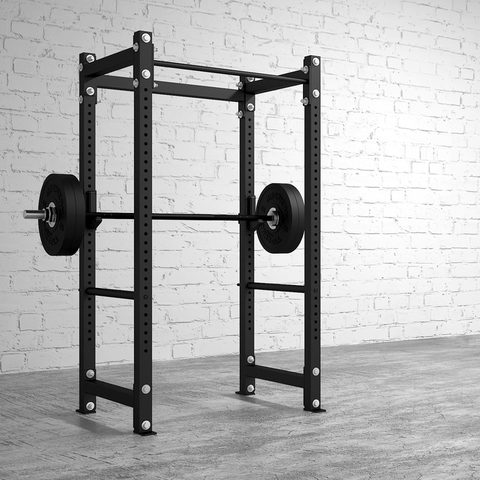
There are so few exercises that can be done safely with a barbell in a power rack that neither of them are worth the investment.
Maximizing Your Workout
To maximize your workout at home, focus on comprehensive full-body exercises and tailor your training to fit your specific fitness goals. This approach ensures well-rounded development and helps maintain consistent progress in strength and endurance.
Incorporating Full-Body Workouts
Full-body workouts are essential for balanced muscular development and efficient use of time. They engage multiple muscle groups, which enhances overall strength and functional fitness. Utilizing a functional trainer and incorporating basic equipment like resistance bands, dumbbells, and pullup/pushup bars can significantly benefit your routine.
Key exercises include:
- A lower body push for leg and core strength.
- An upper body push for upper body and core engagement.
- Midsection exercises for total-body strength.
- An upper body pull for back and arm muscles.
Incorporate strength training exercises gradually to avoid overtraining and ensure proper technique. Additionally, following a structured resistance training program can optimize muscle growth and endurance.
Personalizing Your Training Program
To maximize effectiveness, tailor your program to your specific goals, whether they are related to bodybuilding, endurance, or overall fitness. Establish a clear plan that includes your goals, current fitness level, and available equipment. Consulting a certified personal trainer or using reliable online training program can provide valuable guidance.
Customize the frequency, intensity, and type of exercises to match your progress and adjust as needed. Programs can be varied to incorporate rehab-type exercises for previously injured or injury-prone areas of your body. Using fitness products like resistance bands or wrist/ankle weights can add versatility to your workouts.
Remember to listen to your body and include adequate rest and recovery periods to prevent injury and promote muscle growth. Prioritize consistency and gradual progress to achieve optimal results.
Gym Quality and Safety Features
Ensuring your home gym setup prioritizes safety and utilizes high-quality, durable equipment is vital. This ensures a productive workout environment and minimizes the risk of injury.
Assessing Equipment Quality and Durability
To assess quality and durability, focus on materials and construction. Equipment from reputable manufacturers, such as Life Fitness, often ensures reliability. Look for features like robust frames made from high-grade steel.
Check the weight capacity of machines and components. Higher capacities often indicate better construction. For example, quality support stands and benches should withstand significant weight without bending.
Read reviews and testimonials. User experiences can offer insights into long-term durability and potential issues. Regularly inspect equipment for wear and damage to maintain a safe workout environment.
What to look for when considering multi-station home gyms:
- Look for one that is engineered to provide smooth, appropriate resistance throughout the full range of motion.
- Try to find one that includes a leg press station. The leg press is the most effective exercise for lower body muscle building, and having this exercise available at home is a huge benefit.
- They must be able to provide progressive resistance. There has to be a way to increase the resistance in small increments as you get stronger.
- They should have a good track record of durability. This is where checking the reviews pays off.
- You want them to have an excellent warranty.
Ensuring Safety and Proper Use
Safety in a home gym setup revolves around proper equipment use and installation. Ensure that machines are correctly assembled following the manufacturer’s instructions. Improper assembly can lead to safety hazards.
Ensure flooring provides adequate grip and cushioning to prevent slips and falls.
Maintain clear walkways to avoid tripping hazards, and routinely check for loose bolts or unstable components. Regular maintenance is essential to ensure ongoing safety.
In addition, the exercises you choose to do have a lot to do with safety, not to mention the strength and muscle building results you get. Not all exercises are created equal in this regard.
You want to pick exercises that focus on the working muscles, without relying on balance or athletic skill. Either of those requirements will compromise the intensity of the workout, and create a higher risk of injury – both bad.
So the ideal strength training exercise is one where all you have to concentrate on is pushing or pulling as hard as you can with the working muscles, without having to worry about losing your balance, having something fall on you, or getting stuck under a heavy weight. If your mind is distracted by those dangers, you won’t be able to concentrate on putting in a maximum effort.
Here are some criteria to guide your exercise selections:
- Make sure you can exit the exercise safely at any time.
- On any exercise where you will be under the weight, make sure there is some barrier to catch the weight to prevent you from getting stuck under it. (Don’t be the next guy in a YouTube video getting trapped under the weight while bench pressing).
- The more complex an exercise is to perform, the more dangerous and less intense it will be. For example, power cleans or Olympic lifts.
- If you have back problems, it’s a good idea to always have your chest or back supported during an exercise. For example, seated dumbbell curls would be preferable to standing barbell curls.
- If you want your shoulders to stay healthy, don’t put anything behind your neck. This includes barbell squats and behind the neck pulldowns or shoulder presses.
Space Saving Solutions
When setting up a home gym in limited space, using compact, versatile, and portable equipment is essential. These tools enable you to maximize your workout options without overwhelming your living area.
Compact and Portable Equipment
Investing in compact and portable equipment can transform any small space into a functional home gym.
Resistance bands are an excellent choice, offering flexibility and requiring minimal storage. You can easily fit them in a drawer or hang them on a hook. They are also great to throw in your suitcase when traveling.
Consider an adjustable dumbbell set which allows you to adjust the weight according to your needs. This saves space compared to having multiple fixed-weight dumbbells. A foldable exercise bike can be stored away when not in use, ensuring that your living area remains uncluttered.
Additionally, a yoga mat you can roll up and fitness steps and risers can be stored vertically or tucked under furniture. These items are not only space-efficient but also enhance your exercise routine without permanent fixtures.
Multipurpose Equipment
Multipurpose strength training equipment is vital for small spaces, as it combines various functions into a single piece. For example, push-up bars that double as a pull-up bar maximizes utility. This stand lets you perform squats and pull-ups without needing separate equipment for each exercise.
Adjustable benches can be used for various exercises like bench presses, dumbbell rows, or even as a support for core workouts. Their adaptability makes them indispensable in compact home gyms.
You might also consider an all-in-one gym machine if space allows. These machines often combine features like pulley systems, adjustable weight stacks, and more, providing full-body workouts without multiple items.
Using versatile pieces like dumbbells and stability balls can significantly enhance your workout variety while occupying minimal space. Versatility in your equipment ensures that a compact home gym setup can still provide robust fitness options.
Maintaining Your Home Gym
Proper maintenance of your home gym ensures ease of use and extends the durability of your equipment.
Regularly clean your equipment. Wipe down surfaces after each use to remove sweat and dust. This helps prevent rust and keeps machines operating smoothly. A clean gym is more inviting and healthier.
Check bolts and screws periodically. Machines like treadmills or multi-station setups often have many moving parts that can loosen with time. Tightening these parts helps avoid accidents and prolong equipment life.
Lubricate any moving parts. For machines such as ellipticals or treadmills, regular lubrication reduces friction and wear. Refer to your equipment’s manual for the recommended type of lubricant.
Inspect cables and resistance bands for signs of wear and tear. Replace any frayed cables or bands to avoid injuries. Using damaged equipment can be dangerous and ineffective for your workout goals.
Consider using a maintenance log. Keeping track of when and what maintenance you perform ensures consistency. Logging this information helps you stay on top of required upkeep.
Here’s a basic maintenance checklist:
| Task | Frequency |
| Wipe down surfaces | After each use |
| Tighten bolts and screws | Monthly |
| Lubricate moving parts | Quarterly |
| Inspect cables and bands | Biannually |
| Replace worn accessories | As needed |
Maintaining your home gym involves simple yet crucial steps. Proper upkeep will ensure your equipment remains durable and easy to use, providing you with a safe and effective workout environment.
Advanced Training Accessories
Enhancing your home gym with advanced training accessories can significantly elevate your fitness routine. Essential gear such as specialty benches and adjustable resistance equipment will cater to all your strength and conditioning needs.
Specialty Benches and Attachments
A 45-Degree back extension bench and other specialty benches, provide unique positions for varied muscle engagement.
Grip strengthening accessories, like wrist rollers or grippers are particularly beneficial for strengthening the hands, wrists and forearms. Sometimes arthritis or old injuries can cause pain and stiffness to these areas, and this type of specialized equipment can help.
For garage or basement gyms with lots of space available, single station plate-loaded weight machines can be a great addition. The machines add variety while maintaining safety, and can work your muscles in ways free weights can’t. You can also switch plates from one machine to another, so you don’t need hundreds of pounds of extra weights.
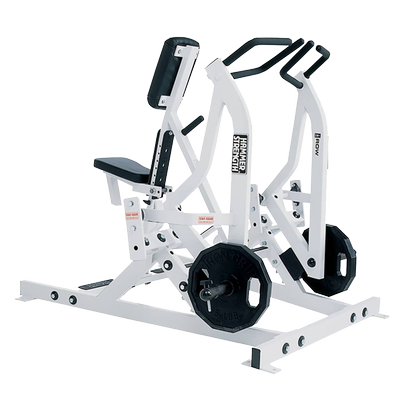 For storing free weight barbell plates, a weight tree can keep your space orderly and prevent tripping over weights.
For storing free weight barbell plates, a weight tree can keep your space orderly and prevent tripping over weights.
Resistance and Assistance Gear
Resistance bands and other resistance training tools are compact yet powerful additions to any home gym. Bands come in varying levels of resistance, making them suitable for progressive strength training. They are super versatile and can be used for many different exercises.
The bands come in different colors, and each color has a slightly different thickness. Make sure you don’t just get one color, get several so you can progress as you get stronger over time.
In addition, wrist weights can be worn to help increase resistance on upper-body dumbbell exercises when a small increase is called for.
For example, going from 25-pound dumbbells to 30-pound dumbbells represents a 20% weight increase, and that big a jump might not allow you to get enough reps with good form when you first try the 30’s. Using the 25’s plus 2-pound wrist weights puts you at 27 pounds, a nice intermediate jump of only 8%.
As you got stronger, you could add another 1-pound wrist weight to make a total of 3 additional pounds, which will bring you to 28 pounds that you’re lifting. As your strength increases it’s then an easy transition up to 30 pounds.
For multi-station home gyms or plate-loaded weight machines, you can buy magnetic add-on weights that weigh 1.25, 2.5 or 5 pounds, to achieve the same incremental increases.
Sourcing Gym Equipment
When sourcing gym equipment, consider both new and second-hand options to suit your budget and requirements. Each has its own benefits and challenges, which we’ll explore to help you make an informed decision.
New vs. Second-Hand Equipment
New Equipment
Buying new equipment comes with the advantage of warranty and the latest features. Just doing an online search for ‘Fitness Equipment For Sale’ will show many sources for new equipment.
New purchases ensure you’re the first owner, reducing wear and tear concerns. This option also allows customization and access to customer service for setup assistance and troubleshooting. While more expensive, new equipment often includes cutting-edge technology, enhancing your workout experience.
Second-Hand Equipment
Second-hand equipment can be more economical and equally effective. Websites like Craigslist and Facebook Marketplace are popular for finding used gym gear.
Check for well-known brands like to ensure durability and reliability. Inspect items in person when possible to verify condition. Look out for signs of excessive wear or damage. Second-hand purchases may lack warranties, so it’s important to factor in potential repair costs.
Measuring Progress and Success
To optimize your home gym setup, it’s crucial to track your progress accurately and set achievable goals. Monitoring these aspects will ensure you remain motivated and achieve your desired fitness outcomes.
Tracking Workout Efficiency
Effective tracking helps you understand the efficiency of your workouts. Use fitness apps or wearable devices that log data such as calories burned, heart rate, and the duration of each exercise session. This data can help you see trends over time.
Create a workout journal to note down exercises, sets, and repetitions. By updating your journal after every session, you can identify which workouts produce the best results and adjust your routine accordingly.
You may be tempted to skip this step, and just jump right into the workout without creating your written journal of everything you intend to do in your workouts. And it may seem tedious to have to record each workout.
But skipping these steps would be a big mistake. Starting with a written plan and recording important data is an essential component of success in pretty much any field.
Can you imagine a construction company trying to build a house without a written blueprint to follow? Or your doctor trying to rely on his memory of your past medical history every time you go in for a checkup? And I can tell you from personal experience that every player in the NFL receives a playbook as soon as he makes the team.
Similarly, you will not get the most out of the time and effort you devote to your workout plan unless you write things down. Without this data, you won’t know how or when to make progressive changes to your workout plan, and will drastically reduce its effectiveness. And it’s very motivating to be able to see your week-to-week progress before your eyes.
Trust me, your results will be infinitely better if you write down what you’re doing in your workouts on an ongoing basis, starting today. It only takes a couple extra minutes, and once you see how much better your results are by doing it you’ll be hooked.
Working with a reputable Certified Personal Trainer (CPT) can provide personalized guidance. Online coaching platforms often offer feedback on your progress, helping you tweak your workout plan to maximize efficiency. Engage with these resources to stay on track.
Setting and Reviewing Goals
Establish clear, measurable fitness goals to maintain focus. Goals could range from losing a certain amount of weight to increasing muscle mass or improving cardiovascular health. Having specific targets will provide direction and motivation.
Regularly review your goals. For example, set a monthly or bi-annual schedule to assess your progress. Use metrics such as body measurements, weight changes, or performance improvements in specific exercises. Adjust your goals based on these reviews.
Consider seeking feedback from certified personal trainers. They can be found in your local area or online, and can assess your progress and recommend new goals or adjustments to your current ones. Reviews from these professionals ensure that your goals remain realistic and attainable.
In summary, effectively tracking your workout efficiency and setting realistic goals can transform your home gym experience, ensuring both short-term and long-term success.
Frequently Asked Questions
Designing your home gym requires careful consideration of equipment, space, safety, and your fitness goals. Here are key questions to guide your setup.
What essential equipment should I include in a beginner’s best home gym setup?
For a beginner, start with a set of adjustable dumbbells, resistance bands, a stability ball, an adjustable bench, and a yoga mat. These basics allow you to perform a wide variety of exercises without taking up much space.
How can I create an effective full body workout within a home gym with limited space?
Use versatile equipment like a foldable bench and adjustable dumbbells. Include exercises that target multiple muscle groups such as squats, lunges, and push-ups, and rows. Resistance bands can also add variety and intensity.
What are the must-have items to include in a top-rated home gym?
A top-rated home gym should have a mix of free weights and machines for total development. If you have the space, you could include both strength and cardio equipment. Consider a treadmill or stationary bike, weight bench, free weights, and functional trainers. Adding a mirror can help you maintain proper form.
What considerations should be taken into account when choosing equipment for a home gym focusing on muscle building?
When focusing on muscle building, prioritize free weights like dumbbells plate-loaded machines. Ensure you have a sturdy weight bench and the ability to add resistance as you get stronger over time. This is known as progressive resistance exercise, or PRE, and it is the essential stimulus for lasting strength and muscle building.
How can I layout and organize my home gym for maximum efficiency and safety?
Make sure your weight bench is set up near your adjustable dumbbells, with nothing in between that will get in your way. Once you lift the dumbbells, you don’t want to waste energy or risk and injury walking around with them to get to your bench for your exercise, and especially when you’re done and you need to put the dumbbells back when you’re fatigued.
Allocate different zones for cardio, strength training, and stretching. Keep the floor area clear of clutter to prevent accidents. Use storage solutions like wall-mounted racks and shelving units to keep equipment organized.
What size room do I need to adequately accommodate a comprehensive home gym?
Small spaces can still serve as effective workout areas with careful planning. With just the bare minimum ‘essential home gym equipment’ (see below), you can get by with a space as small as 5 feet by 7 feet.
For most multi-station compact home gyms, you will need at least a 10 foot by 10 foot space.
A comprehensive home gym typically requires at least 150-250 square feet. This allows enough space for equipment, movement, and storage without feeling cramped. Consider ceiling height as well for exercises like overhead presses and pulldowns.
Best Home Gym Setup: Key Takeaways
- Choose versatile equipment to maximize space.
- Prioritize quality and safety in your setup.
- Safety in a home gym setup revolves around proper equipment use and installation.
- Regular maintenance ensures longevity and effectiveness.
- Strength training should be the foundation of an overall fitness plan.
- Enhancing your home gym with advanced training accessories can significantly elevate your fitness routine.
- When sourcing gym equipment, consider both new and second-hand options to suit your budget and requirements.
- To optimize your home gym setup, it’s crucial to track your progress accurately and set achievable goals.

